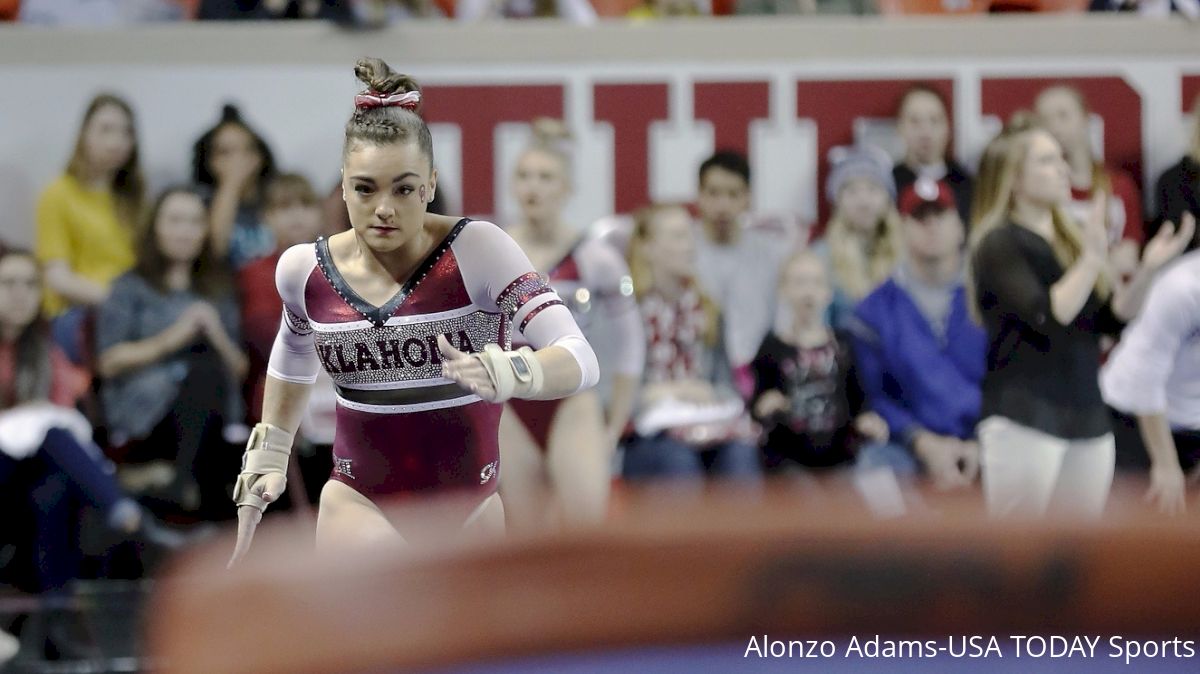The Complete Guide To NCAA Vaults With A 10.0 Start Value
The Complete Guide To NCAA Vaults With A 10.0 Start Value
Like any apparatus in gymnastics, vault is both complicated and ever-changing. Here's your guide to understanding this event in the new NCAA season.

When it comes to vault, scoring should be simple: one skill, one score. Gather up as many high-scoring vaults as you can, and you have your starting lineup. But with the devaluing of the ever-popular Yurchenko fulls in 2015 — from a 10.0 start value to a 9.95 — building the ideal vault lineup got a lot more complex. Stacking your lineup with 10.0 vaults became a lot more difficult… and a lot more important.
So which teams will have the advantage this season? The teams with as many 10.0 vaults as they can muster. Here are the ones that you’ll most likely see in NCAA competition.
Yurchenko 1 1/2
The Yurchenko 1 1/2 is by far the most common of the 10.0-start value vaults, and it rewards those who can add that extra half twist to their Yurchenko fulls. But with that extra half comes a blind landing; unlike with the full, where gymnasts can (ideally) spot where they’re going for a few fractions of a second before their feet hit the mat, a blind landing has the gymnast approaching from the other direction, keeping them from seeing where their feet will land. That makes the landing that much trickier—and the stick that much sweeter.
Yurchenko 1 1/2, Tucked
This version of the Yurchenko 1 1/2 is similar to the one above, but with the flip done in a tucked position, rather than in a layout.
Yurchenko 2/1
You’ll see double-twisting Yurchenkos rather often in elite gymnastics, where it’s in the arsenal of any particularly strong all-arounder. But in NCAA, DTYs are special, reserved for the most powerful vaulters who are willing to take the increased risk. Because it adds a full twist to the Yurchenko full — rather than a half — it doesn’t have a blind landing, but it makes up for the difficulty in the sheer number of twists the gymnast must complete.
Yurchenko 1/2 On, Front Tuck 1/2
The Yurchenko 1/2 on entry starts off just like a normal Yurchenko — with a roundoff back handspring onto the springboard — but the gymnast does a half twist before her hands touch the vault table, so that she’s facing forwards rather than backward into the flight. In the Yurchenko 1/2 on, front tuck 1/2, the gymnast does a front tuck with a half twist off the table, so that she ends up facing the vault.
Yurchenko 1/2 On, Front Pike
The Yurchenko 1/2 on, front pike, also known as the Omelianchik, starts off just like the above vault, but the gymnast does a front pike off the table instead of a tuck, without a half twist.
Yurchenko 1/1 On, Back Tuck or Pike
Blink at the wrong moment, and you’ll miss what’s crazy about the Yurchenko 1/1 on; after the roundoff back handspring onto the springboard, the gymnast does a full twist BEFORE her hands touch the vault table. Complete a back tuck or back pike in flight, and you’ve got yourself a 10.0 start value.
Tsukahara 1/2
In Tsukahara-style vaults, the gymnast runs and jumps onto the springboard; does a 1/2 turn before her hands hit the table; and then does a backflip, whether in the tucked, piked, or layout position. This version of the Tsukahara 1/2 is done in the layout formation with an added half twist, so the gymnast ends the vault with that blind landing.
Tsukahara 1/1
The Tsukahara 1/1 has the same entry as the above vault, but with a full twist in flight instead of a half, so the gymnast avoids a blind landing.
Handspring Pike 1/2
In a handspring vault, the gymnast simply runs and jumps onto the springboard — no roundoffs, no back handsprings, no twists. This actually makes it harder for the gymnast to generate momentum, meaning that she has to do less in flight — in the case of a handspring pike 1/2, a front pike with a half twist — in order to get that 10.0 start value.
Front Handspring, Handspring Pike
Unlike Yurchenko-style vaults, where the gymnast does a roundoff back handspring onto the springboard, this vault has a front handspring entry. The gymnast does a front handspring onto the springboard, then another handspring onto the table. She then does a front flip off the table in a piked formation, ending with — you guessed it — that blind landing.
Brette Warshaw is a freelance writer and consultant based in New York City. You can follow her at @bstarwarshaw.